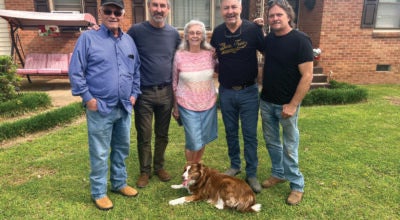County water associations requesting funds
Published 8:40 am Wednesday, February 23, 2022
The plight of the Lovejoy Water Association served as a stark reminder of the mounting problems faced by managers of the various community water associations when Panola County Board of Supervisors heard an update report at its regular meeting last Monday.
Lovejoy currently serves 340 customers and has reached about 95 percent of its capacity. Additionally, the association’s infrastructure is nearly 50 years old and breakdowns are common.
The story can be repeated all over Panola County where nearly every water association is facing mounting repair bills and needed projects with price tags of millions of dollars. In Courtland, which serves much of Pope, sewer backups are common and new hookups have been halted until an expansion can be completed.
County officials have worried for months that Courtland’s system will fail dramatically, which would effectively shutdown the Pope School campus and create a myriad of concerns for residents in the area.
The cost of pumps, pipes, and labor coupled with the reluctance to raise water and sewer rates for decades has made current estimates just to bring systems up to minimal standards far more exorbitant than the small associations have on hand or are willing to borrow.
In Lovejoy’s case, the water association directors and members know rates must be raised, but are more concerned about their share of a nearly million dollar upgrade that will ease pressure on the existing infrastructure, and even allow more customers to be added.
There are currently more than 50 houses on the Panola-Lafayette line that could be added if the homeowners had the opportunity to join Lovejoy. Like other rural associations, Lovejoy would welcome more paying customers, but fears for the condition of the system.
Aerators, service pumps, and storage tanks were installed in 1976. Upgrades to those parts of the system would lay the foundation for future expansions, if funds are available.
Lovejoy has applied for a USDA Rural Development grant geared toward small water and sewer associations, but the best that can be hoped for in grant money will leave them $400,000 short.
It was that amount that representatives of Lovejoy asked the supervisors to pledge to their project at last week’s meeting. Supervisor Chad Weaver, who represents the Lovejoy area, said he wants the board to fund the request, citing growth in that part of the county.
Board president Cole Flint said he also wants to help Lovejoy and other water and sewer systems, but wants to make county help equitable when possible.
Weaver agreed, but said the board’s discussions of how much money to put into which associations have reached a point where some decisions need to be made.
“I don’t want to keep dragging and dragging and us figuring out ways we are going to get rid of this money,” Weave said. “As this money goes out the door I want it to be going to some of these water associations. There are citizens out there who need the county to step forward. Homeowners are faced with having to pay ten thousand dollars for a well, and there’s a four to six month wait to get one drilled right now. Now is when they need help.”
The money Weaver referred to is the approximate $6 million dollars of the federal government’s American Rescue Plan relief money designated for infrastructure improvements.
The county supervisors have allocated some of the windfall, but most has been reserved until the board can study all the needs and evaluate where they believe the most return for dollars spent will be achieved.
Earlier this year the board voted to upgrade hundreds of light fixtures in county buildings to LED with an eye toward future savings.
“I’m great with all these new light bulbs we are buying but we need water more than we need lightbulbs,” Weaver said.
Flint reminded fellow supervisors that Lovejoy, and a few other associations, has taken the initiative to apply for grants and submit documents and plans, while others have not. If the board approves the $400,000 Lovejoy wants, where does that leave the other community associations, he asked.
“I don’t think I can set aside 3.6 million to nine water associations,” Flint said. “Needs are all over the county. Earl (Burdette) has fifty or sixty people in his district that are pailing water to their house right now.”
Flint was talking about the northwest portion of Panola County where some families have no community water available, and can’t afford to repair broken wells or pay to dig new ones. In the most rural areas of the county it is common for several households to share one well, some by connecting to the source or carrying water in buckets.
Supervisors also must weigh the number of households that would benefit per dollar (or millions of dollars) spent on a project. They were expected to meet Tuesday of this week to begin putting actual dollar figures to project estimates and assist the associations in the lengthy and costly process of submitting grant applications and preparing bid specification packages.
“it’s going to be hard to give the same amount of money to different sized water associations,” Weaver said. “Some of them will need more money to get to less people, so it needs to be on a per water association basis.”






